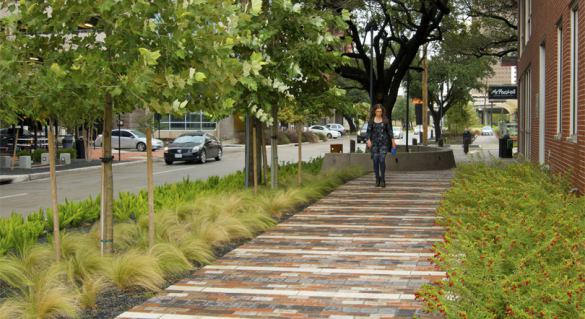In the twenty-first century, our most important public spaces need to be not only complete, hospitable and beautiful but also green in an ecological sense. They need to be places of resilience where nature is respected.
And, on this front, the thinking has barely begun. The most important of several issues is this: streets don’t just convey cars and people; they also convey polluted runoff, passing it along to sewer systems and, eventually, receiving waterways. Among the contaminants are heavy metals; oil and grease; sediment; pesticides, herbicides, and fertilizers from adjacent properties; and household waste.
The good news is that there is an answer, and it can make our communities more beautiful as well as kinder to nature: strategically designed landscaping and paving materials that capture and filter stormwater before it becomes polluted runoff. In urban rights-of-way, such green stormwater infrastructure can include tree planting, rain gardens, swales, permeable pavement, and more. (Several illustrations accompany this article.)
These practices not only control pollution but also help cool urban heat islands (reducing the need for energy-sapping air conditioning), mitigate flooding, recharge groundwater, beautify neighborhoods, and enhance nearby property values.

